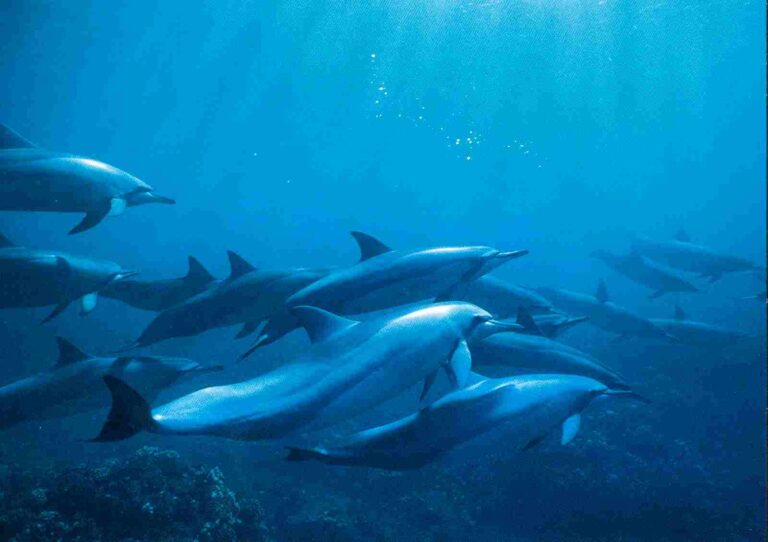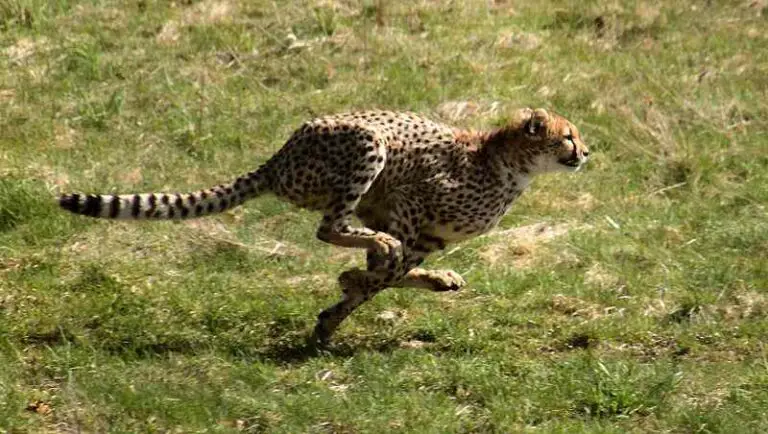14 Effects of Global Warming Explained
The effects of Global Warming include habitat destruction, pests, diseases, food insecurity, world hunger, and environmental degradation.
They are discussed in this article according to the following outline;
3). Effects of Global Warming on Animals
4). Effects of Global Warming on Plants
5). Effects of Global Warming on Humans
6). Effects of Global Warming on the Environment
Key Points in this Article
1). Human activities are the basic cause of Global Warming
2). The effects of Global Warming can be grouped into effects on humans, plants, animals, and the environment
3). Effects on humans may be health effects, social effects, or economic effects
4). Effects on plants include changes in growth patterns, flowering routine, and life cycles, as well as pest and disease infestation
5). Animals may experience Global Warming in terms of disrupted habitats, food scarcity, disease invasion, and extinction
6). Global Warming may impact the environment in the form of ice melting, seasonal pattern changes, extreme weather events and coastal erosion
Introduction
It is known that human activities have played a serious role in causing Global Warming. One of such activities is the combustion of fossil fuels, which leads to Greenhouse Gas Emissions. This involves the release of gases like carbon dioxide and methane into the atmosphere, causing pollution and absorbing solar radiation.
Also, it is impossible to deny that Global Warning is having significant effects on the Earth as a whole. Most of these effects are observable, including melting of glaciers, extreme weather events, and changes in seasonal patterns.
The effects of Global Warming can be grouped into distinct categories. These include;
1). Effects of Global Warming on Animals
2). Effects of Global Warming on Plants
3). Effects of Global Warming on Humans
4). Effects of Global Warming on the Environment
Effects of Global Warming on Animals
1). Disruption of Natural Habitats
Global Warming is very capable of disrupting and even destroying natural habitats [13].
In this process, various organic populations are affected severely. The ecosystem as a whole experiences an imbalance when habitats are disrupted.
In some cases, the displaced and affected animals may migrate to a new environment, adapt and survive. But in most cases, the affected animals are unlikely to survive in the long run.
Given the fast rate of deforestation and the expansion of human settlement, many natural habitats are being destroyed and occupied by humans. Habitats which are not destroyed by humans are disrupted by changes such as heat, ice-melting and drought [10].
Research has shown that different species existing within the same habitat, usually react differently to Global Warming. This means that the increase in temperature is also causing disruptions within ecological communities.

2). Life Cycle Changes
Because of the effects on weather and seasonal patterns, Global Warming also alters the natural life cycles of animals.
This can be observed in terms of changes in the reproductive and migratory periods of animals and variations in hibernation routine.
3). Extinction of Species
Species of both plants and animals face a high risk of extinction due to Global Warming.
It is predicted that many more species will be threatened with extinction by the year 2100, if temperatures near the Earth’s surface are allowed to climb a further 1.5 to 2.5°C. Extinction of species will in turn affect the natural processes and functions in ecosystems.
4). Coastal Erosion
The global rise in sea level implies that several coastal species will likely be displaced due to erosion and flooding of the coast. Animals which face this risk include birds, and invertebrates like crustaceans.
5). Invasive Diseases
Increase in temperature makes environments to be more prone to some invasive disease pathogens. Most of such diseases and their modes of transmission, were earlier confined to the tropical regions [1]. The spread of these pathogens poses a threat to animals in any habitat.
Effects of Global Warming on Plants
1). Water Consumption
Global Warming ultimately increases the rate of precipitation on Earth.
With higher precipitation rates, plants will absorb large amounts of water, which will impact their growth. However, soil nutrients cam be rapidly leached or depleted in the process, making the soil unable to support plant growth effectively.
2). Pest Infestation
With Global Warming, plant pests which were formerly confined to warmer regions will be ale to migrate and thrive in other parts of the world.
This poses a huge threat to plant survival and food availability. Crops which are potentially vulnerable include wheat, maize and rice.
3). Changes in Plant Growth Patterns
The growth patterns of plants are affected by Global Warming, as the plants struggle to survive under changing climatic conditions.
Plants are unable to migrate to more favorable locations like animals, and are therefore forced to adapt.
Most plants grow taller in order to reduce the effects of heat on them. Additionally, several plants experience retardation in their growth, which may reflect in form of leaf and stem shrinkage [6].
The decrease in water availability which accompanies Global Warming is also likely to stunt plant growth.
In some cases, plant growth may be enhanced by the presence of large amounts of carbon dioxide in the atmosphere [11]. This does however imply that the plants will be nutritious for consumption.
Effects of Global Warming on Humans
1). Health Effects
It is predicted by the IPCC that Global Warming will lead to worse conditions of health for humans [8].
A good reason for this is the fact that Global Warming increases the spread of disease vectors like mosquitoes, ticks and tse-tse flies [7]. By doing so, the spread of infectious diseases by these vectors will also increase. This is why Global Warming is accompanied by a rise in the rate of occurrence of malaria, trypanosomiasis and dengue fever, among other insect-borne diseases.
Heat waves, which are a kind of extreme weather event, are becoming more frequent. These events lead to illnesses like heat stroke and heat cramps. Heat waves alone have claimed several thousands of lives in Europe, the United States, and other regions.

Respiratory and pulmonary diseases have also become more frequent, due to Global Warming [4]. This is because of the pollutants released into the atmosphere from human activities, and which contribute to the Greenhouse Effect.
The increased heat places more stress on the human respiratory system, and can cause cardiovascular problems. The concentration of atmospheric ozone, which increases with higher temperatures, is also capable of causing lung diseases.
2). Social effects
Global Warming affects the stability of the human society itself.
One way in which this occurs, is through the impact of Global Warming on Agricultural systems. By reason of severe weather conditions and events like deforestation, floods and droughts, and the spread of plant pests and diseases, agricultural production generally reduces. This in turn leads to food insecurity and economic challenges.
Problems like food insecurity and economic recession can cause social conflict that may lead to loss of lives and property
Effects of Global Warming on the Environment
The general environmental effect of Global Warning is the increase in temperature on the Earth’s surface (Bradford and Pappas 2017). Over the past century, average global temperature has risen by about 1.4 degrees Fahrenheit as a result of Global Warming.
Major effects of Global Warming on the environment are discussed below;
1). Ocean Acidification and Sea Level Rise
Global Warming has led to a general rise in sea level.
According to the World Meteorological Organization (WMO), sea level rise is on an average of 3 millimeters per year across the world.
The main cause of global sea level rise is the melting of glaciers (ice), which increases the volume of water in oceans.
In addition to sea level rise, oceans across the world are being acidified [14]. This occurs because the oceans are absorbing large amounts of carbon dioxide released as a result of human activities.
Although this reduces the amount of carbon dioxide in the atmosphere (and reduces the intensity of Global Warming), it causes pH levels to reduce drastically.
Since the year 1750, pH of the ocean has reduced by about 0.1 units [2]. This acidification affects marine organisms like corals, preventing them from forming durable shells. Ocean acidification is also a threat to the existence of coral reefs [9].
2). Changes in Seasonal Patterns
The sequence and routine of seasons on Earth, are both affected seriously by Global Warming.
This may be observed in the form of varying precipitation intensities, and increased dryness. Such changes threaten the survival of several animal species whose feeding and mating have been adapted to the seasons.
3). Ice Melting
Ice melting is another major environmental effect of Global Warming [5].
Polar regions of the world, and continents including Europe, Asia and North America, have all been affected by ice melting since the past century.
Ice melting is due to the displacement of the polar jet stream (a body of cold air) by warm air currents. In the Arctic, the results of this have been very intense, causing a loss of at least 13% of ice per decade.
So far, up to 95% of the total, thick ice mass in the Arctic has melted because of Global Warming [12]. It is also predicted that the entire ice mass in the Artic Ocean will melt by the year 2040, if the causes of Global Warming are not addressed.

4). Extreme Weather Events
Global Warming also results in extreme weather events.
Examples of extreme weather events that may result from Global Warming are hot and cold extremes. These conditions occur mainly because Global Warming alters the flow of ocean currents and wind.
Hurricanes become more frequent with Global Warming, because of the increased difference between ocean currents and atmospheric gases. Other extreme weather events which become more frequent with Global Warming include rainstorms, lightning strikes, droughts and heat waves.
Conclusion
As discussed in this article, the effects or consequences of Global Warming are numerous. These effects can also be severe, such as extreme weather and ice melting.
The human impacts of Global Warming include potential food shortages as a result of poor agricultural production, health problems like asthma and heat stroke, and conflicts due to shortage of water and food, and economic recession.
Environmental consequences include pollution, sea level rise, coastal erosion, flooding and drought.
Effects on animals and plants include habitat disruption, pest invasion, altered growth and life cycles, and potential extinction.
These impacts can all be addressed by taking action to reduce the emission of gaseous pollutants and greenhouse gases into the atmosphere from human activities.
References
1). ASTMH (2021). “Tropical Diseases.“ Available at: https://www.astmh.org/education-resources/tropical-medicine-q-a/major-tropical-diseases. (Accessed 2 December 2021).
2). Bernie, D.; Lowe, J.; Tyrrell, T.; and Legge, O. (2010). Influence of mitigation policy on ocean acidification. Available at: https://agupubs.onlinelibrary.wiley.com/doi/pdf/10.1029/2010GL043181. (Accessed 2 December 2021).
3). Bradford, A.; and Pappas, S. (2017). “Effects of Global Warming.” Available at: https://www.livescience.com/37057-global-warming-effects.html. (Accessed 2 December 2021).
4). D’Amato, G.; Cecchi, L.; D’Amato, M.; Annesi-Maesano, I. (2014). “Climate change and respiratory diseases.” European Respiratory Review 23: 161-169; DOI: 10.1183/09059180.00001714. Available at: https://err.ersjournals.com/content/23/132/161. (Accessed 2 December 2021).
5). Denchak, M. (2009). “Are the Effects of Global Warming Really that Bad?” Available at: https://www.nrdc.org/stories/are-effects-global-warming-really-bad. (Accessed 2 December 2021).
6). Fahad, S.; Bajwa, A. A.; Nazir, U.; Shakeel A. A.; Ayesha F.; Zohaib, A.; Sadia, S.; Nasim, W.; Adkins, S.; Saud, S.; Muhammad Z.; Alharby, H.; Wu, H.; Wang, D.; and Huang, J. (2017). Crop Production under Drought and Heat Stress: Plant Responses and Management Options. Front. Plant Sci. Available at: https://doi.org/10.3389/fpls.2017.01147. (Accessed 2 December 2021).
7). Fouque F., & Reeder J. C. (2019). Impact of past and on-going changes on climate and weather on vector-borne diseases transmission: a look at the evidence. Infectious Diseases of Poverty, 8(1), 51. https://doi.org/10.1186/s40249-019-0565-1
8). Kasotia, P. (2021). “The Health Effects Of Global Warming: Developing Countries Are The Most Vulnerable.” Available at: https://www.un.org/en/chronicle/article/health-effects-global-warming-developing-countries-are-most-vulnerable. (Accessed 2 December 2021).
9). Madin, K. (2009). “Ocean Acidification: A Risky Shell Game.” Available at: https://www.whoi.edu/oceanus/feature/ocean-acidification-a-risky-shell-game/. (Accessed 2 December 2021).
10). Salmona J, Heller R, Quéméré E, Chikhi L. (2017). Climate change and human colonization triggered habitat loss and fragmentation in Madagascar. Mol Ecol. (9):5203-5222. doi: 10.1111/mec.14173. Available at: https://pubmed.ncbi.nlm.nih.gov/28488335/. (Accessed 2 December 2021).
11). Thompson M, Gamage D, Hirotsu N, Martin A and Seneweera S (2017). Effects of Elevated Carbon Dioxide on Photosynthesis and Carbon Partitioning: A Perspective on Root Sugar Sensing and Hormonal Crosstalk. Front. Physiol. 8:578. Available at: https://www.frontiersin.org/articles/10.3389/fphys.2017.00578/full. (Accessed 2 December 2021).
12). Mooney, C. (2018). “The Arctic Ocean has lost 95 percent of its oldest ice — a startling sign of what’s to come.” Available at: https://www.washingtonpost.com/energy-environment/2018/12/11/arctic-is-even-worse-shape-than-you-realize/. (Accessed 2 December 2021).
13). Muluneh, M.G. (2021). Impact of climate change on biodiversity and food security: a global perspective—a review article. Agric & Food Secur 10, 36. Available at: https://doi.org/10.1186/s40066-021-00318-5. (Accessed 2 December 2021).
14). NOAA (2020). “Ocean acidification.” Available at: https://www.noaa.gov/education/resource-collections/ocean-coasts/ocean-acidification. (Accessed 2 December 2021).


